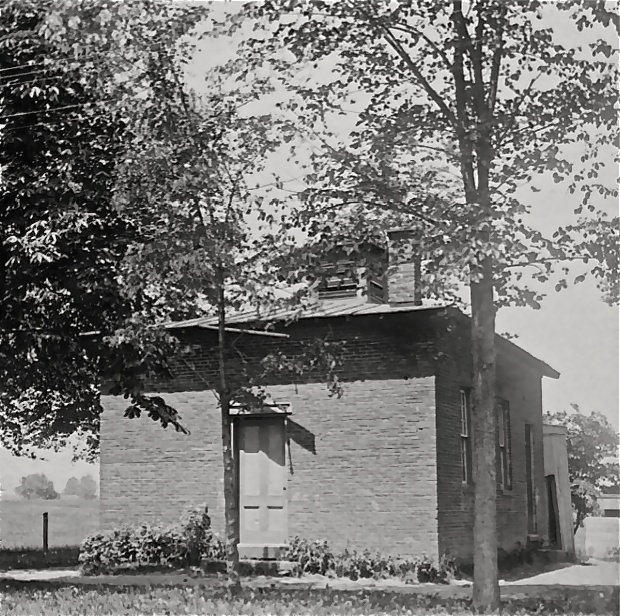|
Can you answer these Trivia Questions about Bloomfield?
1. What town has the longest border with Bloomfield?
2. What town has the shortest?
3. What was Francis Gillette’s house called?
4. Who crafted the Drummer Boy statue?
5. Where does name COPACO come from?
EDUCATION IN WINTONBURY
The earliest constitution of Connecticut stated that children should receive “a good education.” By 1700, towns with 70 families or more were required to maintain an “English school” for the entire year, and smaller towns for a half year. Each parish had to raise taxes for the support of its own schools. Wintonbury, established in 1735, maintained one or more schools from its earliest beginning.
In 1795, Connecticut sold for $1,200,000 the Western Reserve, land in what is now northeastern Ohio. This was the remnant of land Connecticut once claimed all the way to the Pacific based on the original 1663 grant from Charles II of England. With the money, Connecticut established a school fund, the interest of which was to support Connecticut’s public schools.
Perhaps influenced by the prospect of state funding, Wintonbury seemed to go on a school building spree about 1795. By this time, the parish had developed seven school districts each with its own building and school committee, all under the control of the Ecclesiastical Society of the Congregational Church. The committee was empowered to levy taxes, hire teachers and furnish fuel and supplies. A “Committee of One” and a clerk were elected to serve for a year, the responsibility rotating among the men of the district.
 The South Middle District School was originally a frame building, built in 1794, on Gillett Street, now Cottage Grove Road, across from CIGNA. In 1853, it was replaced by a brick building, farther east. Over the door was the inscription: “Receive instruction and not silver and knowledge rather than choice gold.” The school was torn down in 1962. The South Middle District School was originally a frame building, built in 1794, on Gillett Street, now Cottage Grove Road, across from CIGNA. In 1853, it was replaced by a brick building, farther east. Over the door was the inscription: “Receive instruction and not silver and knowledge rather than choice gold.” The school was torn down in 1962.
The North Middle District school, built in 1800, stood near the corner of Tunxis Avenue and Ridgeview Road and later moved across the street. The teacher boarded at the nearby 1730 “Sally Brown House.”
The 1795 Center District School was located on Whirlwind Hill where Mountain View Cemetery is today. In the 1870s, it became too crowded (60 students were enrolled one winter) and classes were moved to the Old Academy Building, where the Center fire station is now located.
Probably around 1800, the Northeast District School was built on Filley Street between 2 Newberry houses. The custom was for farmers to donate land to the school district for as long as it was needed. The school closed in 1930 and was taken down.
The original Southwest District School was a crude wooden structure on Simsbury Road, across from the Old Prosser Inn. It burned down in the 1850s and until the new trap rock school was built in 1858, slightly farther east, classes were held in the nearby Madison Cadwell House. After hours, the school was used as a neighborhood library and a meeting place for such groups as the Salvation Army, the Temperance society, prayer groups and the Red Cross. In 1924, no longer used as a school, it became a branch of the Prosser Library. It is now maintained by the Wintonbury Historical Society.
The first school in the Duncaster District was on a triangle of land where Duncaster Road, Mountain Avenue and West Street meet. A new school was built in 1855 farther north on Duncaster. That building was moved to West Street and converted to a residence when another was built at the same spot in 1926. After the school closed, it was used by the Tunxis Grange for many years.
When the Scotland section of Simsbury was annexed to Bloomfield in 1843, 2 additional school districts came with it. The Scotland South school was at the corner of Adams and Duncaster Roads. The 1795 Scotland North school was on Tariffville Road near Old St. Andrews Cemetery. In the early 1900s, classes were held in a new building, now part of a residence, at the north end of Duncaster Road. The Tariffville Road school was donated to Simsbury in 1969 for their 300th Anniversary and can be seen there at the Phelps Tavern Museum site.
The Old Farm District School was built in 1795. We know more about this school than the others. Its long, interesting history will be featured in the next Wintonbury to Bloomfield article in this series.
by Ralph Schmoll
Wintonbury Historical Society |